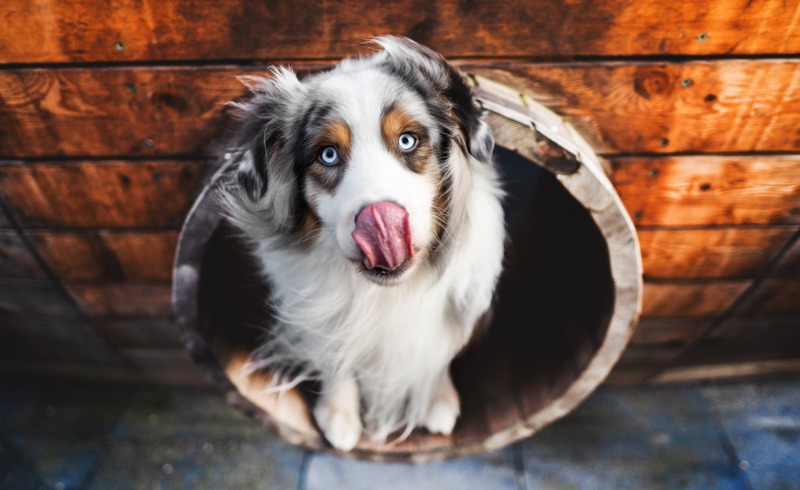As pet parents, we often ponder over the needs of our furry friends, aspiring to ensure they live healthy and joyful lives. Major elements of pet care typically include a balanced diet, plenty of love, and, important among these, appropriate exercise. Just like humans, pets need regular physical activity for a myriad of reasons.
Exercise for Maintaining Weight and Joint Health
Why Is Keeping My Pet Active So Crucial?
Pets, similar to their human counterparts, require exercise to maintain a healthy weight. An overweight pet faces a higher risk of health issues such as diabetes, heart disease, and arthritis. Regular movement helps keep the joints limber, which is particularly beneficial for pets prone to joint problems like hip dysplasia.
-
Preventing Obesity: Physical activity helps burn calories and prevents obesity, which can be a silent menace to a pet’s quality of life.
-
Maintaining Muscle Tone: Just as with people, exercise helps pets maintain muscle tone and overall strength, which are critical for their day-to-day activities.
-
Improving Flexibility: Activity keeps joints, tendons, and ligaments flexible, reducing the risk of injuries.
Can Exercise Impact My Pet’s Behavior?
Yes indeed! Exercise goes beyond physical health, profoundly impacting the mental well-being of your pet. A well-exercised pet is typically more relaxed and less prone to develop behavior problems such as excessive barking, chewing, or digging.
-
Stress Reduction: Pets with pent-up energy may exhibit stress or anxiety, which physical activity can help alleviate.
-
Behavior Modification: Routine exercise can correct destructive or hyperactive behaviors by channeling energy into a positive outlet.
-
Bonding Opportunities: Engaging in activities together strengthens your bond with your pet, creating a deeper relationship.
Exercise Needs Differ Among Pets
Just as each pet has a unique personality, their need for activity can vary based on their breed, age, and health status. It is essential to tailor the exercise routine to your pet’s individual needs to ensure it’s beneficial and not harmful.
-
Breed-Specific Requirements: Some breeds have higher energy levels and need more intense activity than others.
-
Age Considerations: Younger pets often require more exercise than older ones, and special care must be taken not to overexert senior pets.
-
Health Restrictions: Pets with certain health conditions may need modified exercise routines to accommodate their limits.
Type and Amount of Exercise
Identifying the right type and amount of exercise for your pet is key. Whether it’s a daily walk, a game of fetch, or agility training, providing variety can keep them engaged and excited about physical activity.
-
Daily Walks: A brisk walk is a good start for dogs of all shapes and sizes. Ensure the pace and distance are suitable for your pet.
-
Interactive Play: Games that stimulate a pet’s mind and body are excellent for cats and some dog breeds.
-
Structured Activities: Training sessions and sports can provide mental stimulation as well as physical exercise.
Modern schedules can be hectic, but ensuring your pet gets enough exercise doesn’t always require a significant time commitment. Use your surroundings to your advantage – even a staircase can become a workout zone for a game of fetch!
Importance of Tailored Veterinary Guidance
Before starting any new exercise routine, it’s a wise decision to get a routine checkup for pets. Visiting the vet for tailored advice can save you a lot of trouble down the line, such as exacerbating a hidden health issue.
Consulting with professionals, including those skilled in internal medicine vet in Sacramento, ensures that your pet’s exercise plan complements their overall healthcare. Such experts can guide you appropriately in creating a routine that optimizes your pet’s physiological and mental well-being.
Emergency Situations and Exercising Pets
It is also essential to be prepared for emergencies that might arise from exercising your pet. Knowing the location of your nearest emergency pet hospital is crucial, as accidents can happen when you least expect them. From injuries during play to heatstroke on hot days, having quick access to such services can be lifesaving.
Nurturing Their Overall Well-being with Pet Services
While exercise is central to physical health, encompassing all facets of pet care is what truly enriches their lives. This includes pet vaccinations, which are pivotal in preventing serious diseases, as well as grooming, which not only keeps them looking their best but also serves as a check for any abnormal bumps or lumps.
From neutering and spaying services to managing nutrition, pet grooming services, and having a solid relationship with an animal hospital, you are actively contributing to a fuller, healthier, and happier life for your pet.
The Role of Nutrition
As you focus on exercise, remember that nutrition goes hand-in-hand with physical activity. Feeding a balanced diet tailored to your pet’s exercise regime is paramount. A pet that is expending a lot of energy needs more calories and specific nutrients.
-
Formulated Diets: Different breeds and sizes of pets require specialized diets to meet their needs.
-
Nutritional Supplements: Some active pets might benefit from supplements to aid with recovery and joint health.
-
Hydration: Ensuring your pet has access to clean water before, during, and after exercise is vital.
To End
In conclusion, exercise is a cornerstone of a pet’s life, significantly contributing to their overall wellness. Remembering to attend to their needs with regularity, observing changes related to their health, and seeking professional guidance as needed can lead to a long, happy life for your four-legged companion. Embrace the vitality of your pet by keeping them active, and enjoy the countless benefits that come with an energetic and healthy pet.


